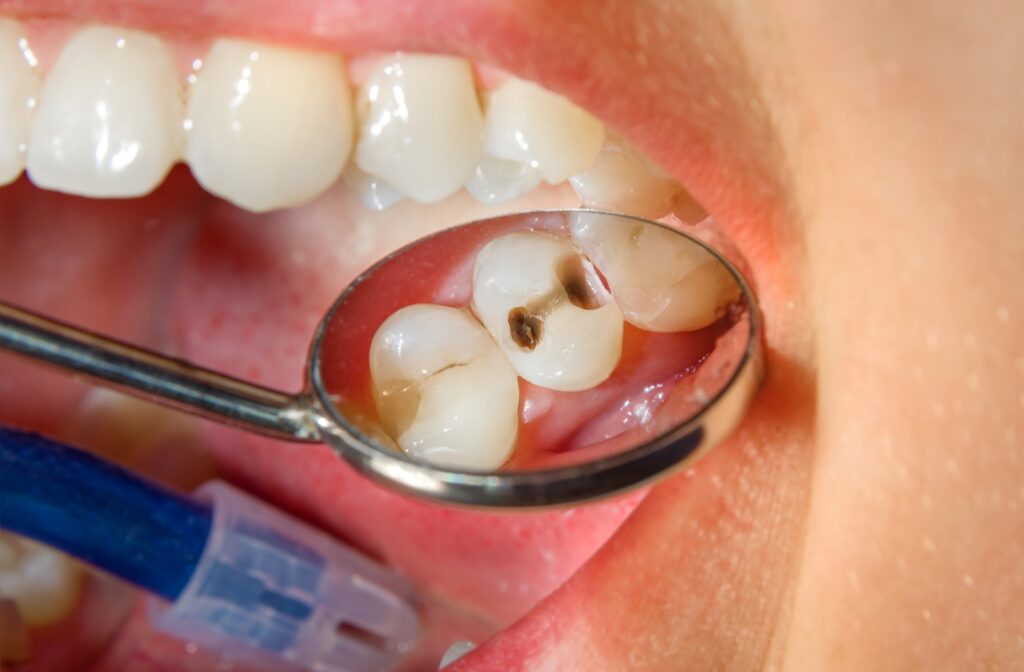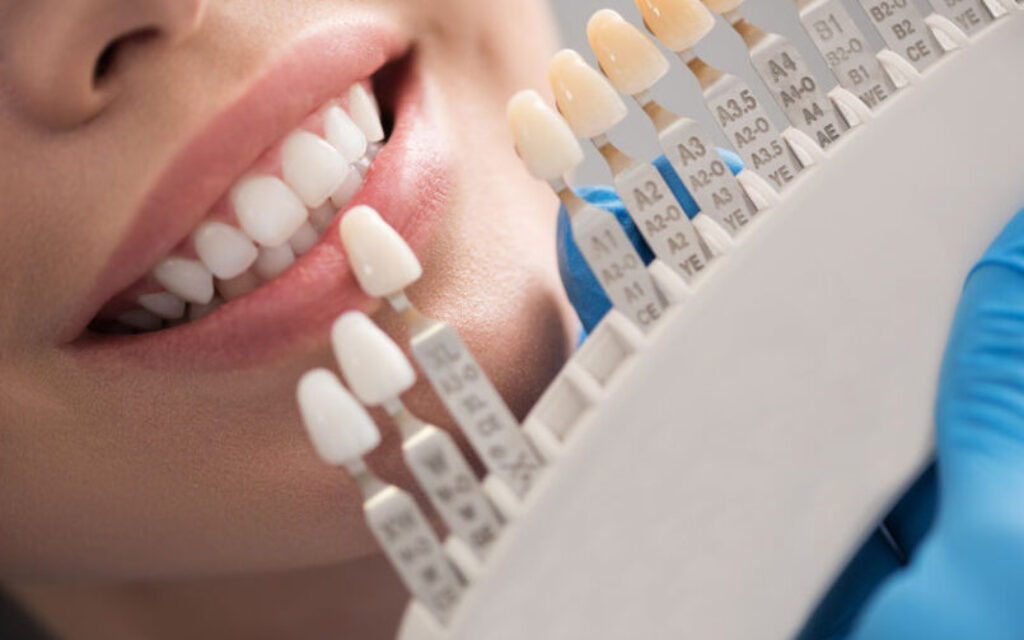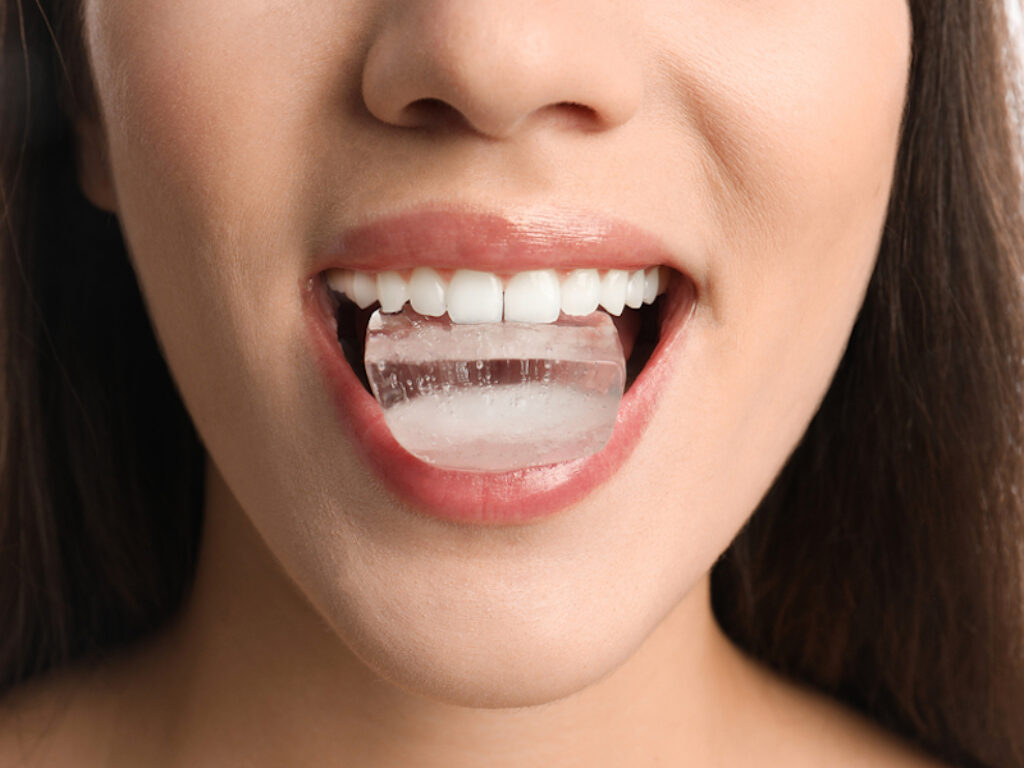
Table of Contents
Teeth Bonding From A Dentist Near Me: A Guide
A perfect smile is everyone’s dream. However, not everyone is born with pearly-white teeth, which can affect their confidence and self-esteem. Fortunately, several dental procedures can help improve the appearance of your teeth, including teeth bonding. This affordable and effective solution can fix multiple dental issues, from gaps to cracks and discoloration, making it a popular treatment option for those looking to achieve a flawless smile.
In this blog post, we will delve into teeth bonding and discuss everything you need to know about this revolutionary dental procedure. Whether you’re considering teeth bonding or simply interested in learning more about it, keep reading to discover its benefits and how it can transform your smile.
What are Teeth Bondings?

Source: adcteam.com
Teeth bonding, also known as dental bonding or composite bonding, is a popular cosmetic dental procedure designed to enhance the appearance of your teeth. During this process, a dentist applies a tooth-coloured resin material to the affected teeth to alter their shape, size, or colour, resulting in a more aesthetically pleasing smile.
The dental bonding procedure begins with the dentist selecting a resin material that closely matches the natural colour of your teeth. This ensures a seamless and natural-looking result. The tooth surface is gently prepared by roughening it and applying a conditioning liquid. This helps the resin material adhere securely to the tooth.
Next, the dentist carefully applies the resin material onto the tooth, sculpting and shaping it to achieve the desired outcome. This step requires skill and precision to ensure proper alignment with the surrounding teeth and the overall symmetry of the smile. The dentist may also use various tools to mould and smooth the resin, creating a natural tooth contour.
Once the resin material is in place and properly shaped, it is bonded to the tooth using a special dental light or laser. This light activates a chemical in the resin that triggers a hardening reaction, permanently bonding the material to the tooth. The dentist may apply multiple resin layers, each hardened with light, to achieve the desired result.
Why Do You Need Teeth Bonding
Dental bonding addresses several common problems, such as:
Dental Decay

Source: palermovillagedental.com
When cavities or small areas of decay are present, dental bonding can be used to repair and restore the affected teeth. The bonding material is applied to the decayed area, sealing it and preventing further deterioration. By filling the cavity with tooth-coloured resin, the bonding stops decay and restores the natural appearance of the tooth.
Chipped or Cracked Teeth
Accidents, trauma, or biting down on hard objects can cause teeth to chip or develop cracks. Dental bonding is an excellent solution for repairing such damage. The resin material is carefully applied to the affected area, restoring the tooth’s shape, structure, and functionality. This not only enhances the tooth’s appearance but also prevents further damage and sensitivity.
Tooth Discoloration

Source: now.tufts.edu
Teeth that are stained or discoloured can greatly impact your smile. Dental bonding provides a simple and effective way to address tooth discoloration. The tooth-coloured resin is applied to the discoloured tooth, effectively covering the stains and restoring a more vibrant, uniform colour. This cosmetic bonding technique can significantly improve the overall aesthetics of your smile.
Gaps and Spacing Issues
Uneven spacing between teeth or gaps can affect your confidence in your smile. Dental bonding can be used to address these issues as well. The resin material is applied to the tooth surface, filling in the gaps and spaces between teeth. By carefully shaping and sculpting the resin, the dentist can create a more balanced and harmonious appearance, giving the illusion of properly aligned teeth.
Are There Any Risks of Teeth Bonding?

Source: mplsdental.com
Cosmetic bonding is generally considered a safe and minimally invasive procedure. However, there are some potential considerations to be aware of. Some individuals may experience temporary tooth sensitivity after the bonding, especially if the material is applied close to the gum line. This sensitivity usually subsides within a few weeks.
Composite resin doesn’t stain easily but can change colour over time, especially if exposed to strong-coloured things like coffee, tea, or smoke. Keeping your teeth clean and avoiding damaging things can help reduce this risk.
Furthermore, cosmetic bonding may be short-lasting compared to materials like porcelain or metal. Depending on individual habits, bonding may require periodic maintenance or replacement.
These risks can be minimized or avoided by choosing a skilled and experienced dentist, following proper oral hygiene practices, and discussing any concerns or questions with your dental professional.
How Teeth Bonding Works
This dental bonding procedure is done where a tooth-coloured resin material is applied to the teeth’s surface. These materials are flexible and can be shaped to fix dental problems. It starts with a consultation to assess your oral health and decide if dental bonding suits you.
The dentist prepares the tooth surface during the procedure by roughening it a bit and applying a conditioning gel. This helps the bonding material stick securely. Then, the dentist applies the resin in layers, carefully shaping it to get the desired result. They match the colour of the resin to your natural teeth for a seamless look.
After placing the resin, a special light is used to harden it quickly. This light activates the chemicals in the resin, making it solid and firmly bonded to the tooth. The dentist then adjusts the shape and contour of the bonded tooth to ensure it fits your bite comfortably.
Cosmetic bonding is versatile and can fix dental issues like chipped or cracked teeth, stains, and gaps, and even change tooth shape or length. When done correctly by the dentist, this bonding technique can significantly enhance your smile’s appearance.
It’s worth noting that it is a quick and non-invasive procedure. Anesthesia is usually unnecessary unless a cavity needs filling. Tooth bonding differs from treatments like veneers or crowns because it only needs a small amount of tooth enamel to be removed. This means that your natural teeth stay in place.
After the bonding procedure, you’ll have a transformed smile that looks better and more aligned. The results are immediate, giving you an instantly refreshed smile. Teeth bonding can last a long time with the right upkeep, increasing your self-assurance and self-esteem. It’s important to consult a skilled dental professional to determine if tooth bonding is right for you based on your dental needs and goals.
Benefits of Teeth Bonding
Dental bonding has many benefits, making it an ideal option for people who want to fix dental problems.
Better Smile

Source: chicagostylesmiles.com
Dental bonding is a fantastic way to achieve a better smile. By addressing dental concerns such as chips, cracks, stains, or gaps, this procedure can transform the appearance of your teeth. Thus, resulting in a more even and attractive smile. With the application of the bonding material, these imperfections are effectively concealed, creating a more uniform and appealing dental aesthetic.
Moreover, the bonding material is meticulously color-matched to your natural teeth, ensuring that it seamlessly blends in with the surrounding teeth. This natural blending allows for a harmonious and cohesive smile that appears authentic and pleasing to the eye.
Less Tooth Damage
This offers a conservative approach when it comes to preserving your natural teeth. Unlike treatments such as veneers or crowns that often necessitate extensive tooth preparation, teeth bonding typically involves minimal removal of your natural tooth structure. This means that most of your tooth remains intact, allowing for preserving its strength and functionality.
The bonding material will be put directly to the surface of your teeth. This conservative nature of the procedure not only helps to retain the integrity of your teeth but also minimizes any potential discomfort or sensitivity that may arise.
Quick and Easy
This bonding procedure can be completed in just one visit to the dentist’s office, unlike other dental procedures that may call for many appointments or substantial lab work.
Your dentist will prepare your teeth, apply the bonding material, mould it to produce the desired effect and harden them using a specialized curing light during the session. You can save time and work because no further appointments or laboratory fabrication are required.
Affordable

Source: keep28.com
Cosmetic bonding is usually cheaper than other options like veneers or crowns. It’s a cost-effective choice for people who want to improve their smile or fix dental issues without spending too much.
It offers a cost-effective solution by utilizing composite resin materials that are more affordable compared to the fabrication and customization processes involved in veneers or crowns. In addition, the composite resin used in teeth bonding is directly applied to the teeth, eliminating the need for complex laboratory work or the involvement of dental technicians.
Not Painful
Teeth bonding is usually painless and doesn’t require anesthesia unless you need a cavity filled. It’s a comfortable option, especially for people anxious about dental procedures.
The dentist will carefully prepare the tooth surface and apply the bonding material during the bonding treatment. This process typically does not cause any pain or discomfort. The composite resin used is pliable and can be moulded and shaped without causing significant sensations. Furthermore, the bonding material does not irritate the surrounding tissues or gums.
Maintenance of Teeth Bonding
Cosmetic bonding usually lasts around five to ten years before it needs to be replaced. But this can vary due to the type of composite resin used. More durable resins may not look as natural and are typically put in the back of the mouth. If the bonding is done on the front teeth, the teeth whitening dentist often chooses a resin that closely resembles natural teeth but is slightly less hard.
Follow these care instructions to extend the life of your bonded teeth:
Practice Good Oral Hygiene
It is crucial to maintain good oral hygiene by brushing your teeth and flossing regularly. This helps prevent tooth decay, which can weaken the bonding material. By keeping up with your oral hygiene routine, you can help your bonded teeth stay in good shape.
Avoid Hard Foods and Chewing Ice

Source: pearlandsmiles.com
Composite resin is not as strong as natural teeth. Therefore, it is important to avoid eating hard foods and chewing on ice, as these habits can cause damage to the bonding material. By refraining from these activities, you can protect your dental work and prevent potential complications.
Reduce Teeth Grinding
Reducing bad habits like drinking too much coffee will lessen teeth grinding, although it can be difficult. This can prevent damage to your bonded teeth.
Avoid Teeth Whitening

Source: allseasonsdentalclinic.com
Composite resin and natural teeth can stain together, and the difference becomes more noticeable after teeth whitening treatments. Whitening procedures typically work on natural teeth and not bonded teeth, so it’s best to avoid them to maintain a consistent appearance.
Caring for your bonded teeth and adopting healthy habits can keep them strong and looking natural for years.
Duration of the Procedure
Understanding the duration of the teeth bonding procedure is vital for effective planning. Teeth bonding is renowned for its relative quickness compared to other dental procedures. Generally, it can take about 30 to 60 minutes per tooth. Having a ballpark time frame can aid in appropriately scheduling appointments and managing expectations, making the dental visit more streamlined and less stressful.
Candidacy and Consultation
Prior consultation with a dentist is pivotal before deciding to undergo teeth bonding. This initial meeting is a decisive step in evaluating whether a patient is a suitable candidate for bonding. Dentists meticulously assess specific dental needs, overall oral health, and individual expectations to determine if bonding is the optimal solution. This step ensures that patients receive the most suitable and effective treatment tailored to their unique needs.
Comparisons with Other Cosmetic Procedures
Teeth bonding is one of several cosmetic dental procedures you can find at Hawkeye Group, and comparing it with alternatives like veneers, dental crowns, and teeth whitening can significantly aid in informed decision-making. For instance, while veneers may offer a longer-lasting solution, they are typically more invasive and costly than bonding. Such comparisons elucidate the pros and cons of each procedure, enabling individuals to align their choices more closely with their preferences, needs, and financial considerations.
Longevity and Lifespan
Setting realistic expectations regarding the lifespan of teeth bonding is essential. The durability of bonding can vary, often requiring touch-ups or replacement every 4-8 years, depending on individual habits like teeth grinding and consumption of staining foods and drinks. Proper maintenance and regular dental check-ups can enhance the longevity of the bonding, ensuring it remains an aesthetically pleasing and functional solution for an extended period.
The Key Takeaway
Cosmetic bonding is a versatile and convenient dental procedure that can address various cosmetic and restorative concerns. Dental bonding is a practical and affordable option for consumers seeking to improve their looks by filling gaps, covering discoloration, and repairing chipped teeth. Proper maintenance and regular dental care from a reliable Maple Ridge dental office can help ensure the longevity of your teeth. Achieve your perfect smile with the help of teeth bonding.







